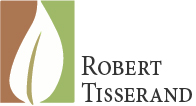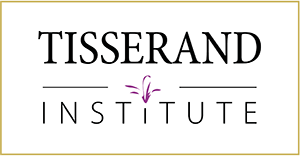definition
Aromatherapy can be defined as the diligent use of essential oils to promote or improve human health, hygiene and wellbeing. The term is applied to personal care products containing essential oils that impart skin-active and/or “feelgood” properties. Essential oils are often found as ingredients in over-the-counter preparations for respiratory health or muscular pain, and there are a number of oral medications that contain essential oils as their active ingredients, although the chances are that your family doctor is not familiar with any of them.
“Aromatherapy” is an all-inclusive term, covering cosmetic and psychological effects, as well as medicinal ones. In order to make a distinction between the more commercial aspects and the medicinal use of essential oils, terms such as clinical aromatherapy, aromatic medicine, and essential oil therapy have been used. Some practitioners regard essential oils as an integral part of the materia medica of herbal medicine, others as therapeutic additions to a massage oil.
The word aromatherapy first appeared in print in 1937 with the publication of a French book called Aromathérapie: Les Hormones Végétales by René-Maurice Gattefossé, a chemist. (An English version was published in 1993.) In 1910, Gattefossé burned one of his hands very badly in a laboratory explosion. The hand developed a serious infection known as gas gangrene, which he intentionally, and successfully, treated with lavender oil. This incident helped greatly to fire Gattefossé’s interest in aromatherapy, though it was not the “lucky accident” that is sometimes recounted by others. In his book, he refers to “The numerous papers, theses and observations made on this subject [fusion_builder_container hundred_percent=”yes” overflow=”visible”][fusion_builder_row][fusion_builder_column type=”1_1″ background_position=”left top” background_color=”” border_size=”” border_color=”” border_style=”solid” spacing=”yes” background_image=”” background_repeat=”no-repeat” padding=”” margin_top=”0px” margin_bottom=”0px” class=”” id=”” animation_type=”” animation_speed=”0.3″ animation_direction=”left” hide_on_mobile=”no” center_content=”no” min_height=”none”][aromatherapy] by the large number of scientists interested since 1907, when our work on the subject commenced..” A French surgeon, Jean Valnet, further pioneered the medicinal uses of essential oils, which he used as antiseptics in the treatment of wounded soldiers during World War II.
However, although the word aromatherapy was not coined until the 20th century, the medicinal use of essential oils and aromatic plants is very much older.
historical musings
Since essential oils are produced by distillation, and distillation was invented in the 10th century by Persians, it could be said that aromatherapy began 1,000 years ago. However a Greek herbalist, Dioscorides, wrote a treatise on herbal medicine in the 1st century, and one large section, On Oils and Trees, includes a detailed elaboration of aromatic herbal oils (made by infusing the plant in hot oil) and their medicinal properties. These were not distilled oils, but still made use of the plants’ aromatic content for therapeutic purposes. If we include these infused, aromatic oils in our definition of aromatherapy, then we could say that it was being quite widely practised by European physicians 2,000 years ago.

Roman fresco
Having “aromatic oils” in the definition of aromatherapy helps in another way – it avoids the problem of including absolutes, which are made by solvent extraction, not distillation. And some absolutes, notably rose and jasmine, are widely used in aromatherapy. Some enthusiasts and practitioners prefer to avoid using absolutes, since they contain traces of industrial solvents used in the extraction process. The question of whether these tiny amounts of solvent are acceptable in aromatherapy is debated.
Reverting to our history lesson, Dioscorides’ book does not mark the first appearance of aromatic oil therapy, since infused oils have been in use for something like 4,000 years. They were employed in ancient Egypt, generally using either animal fat or oil of ben as the base material. (Oil of ben is produced from the seeds of Moringa oleifera, and is now more commonly known as moringa oil.) Incense was also much used in ancient Egypt, and could perhaps be seen as an aspect of early aromatherapy.
So when did aromatherapy begin? In its present form, using distilled oils, 1,000 years ago. As a deliberate use of infused plant oils for medicinal purposes, at least 2,000 years ago, and probably much earlier than that.
Avicenna (980-1037) is credited with the invention of distillation, though other Persians, such as Abulcassis, also contributed significantly to its development. During the crusades (1095-1291) distillation know-how traveled from the Middle East to Europe, and with the invention of the printing press in the early 1500s, we see the appearance in Europe of books on distillation and the therapeutic use of aromatics waters and essential oils.[/fusion_builder_column][/fusion_builder_row][/fusion_builder_container]

